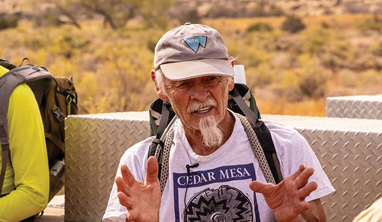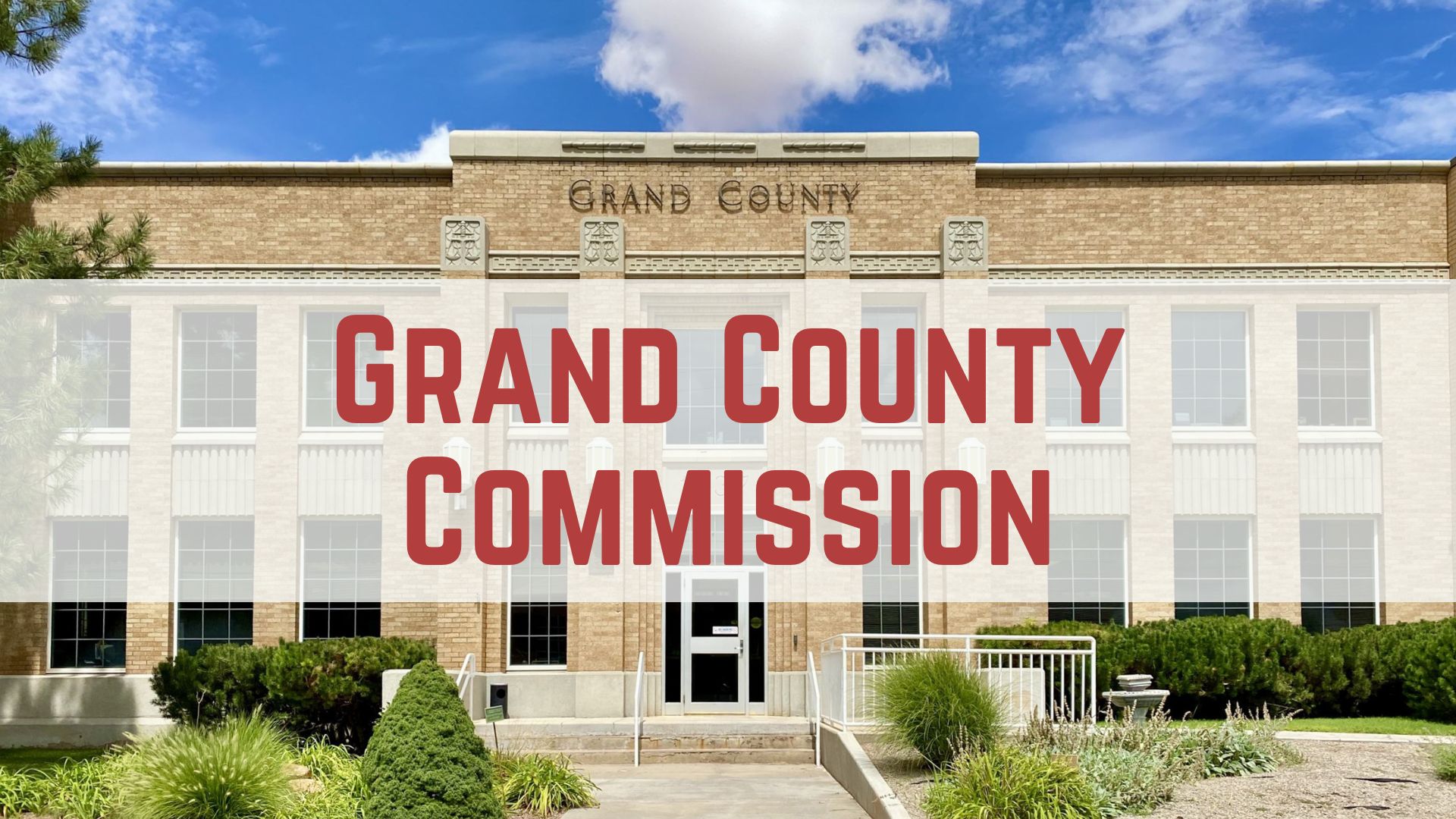Some information may be outdated.
President Donald Trump’s administration is continuing to dismantle its predecessor’s federal land-use policies. But its efforts won’t affect an existing plan to manage more than 785,000 acres of federal land in southern Grand and northern San Juan counties, public lands stakeholders say.
U.S. Interior Secretary Ryan Zinke announced last week that the Bureau of Land Management (BLM) will rescind an Obama-era memorandum that established a Master Leasing Plan process for oil and gas leases on federally administered lands. In its place, the Trump administration will re-establish Resource Management Plans that took shape under former President George W. Bush.
The BLM approved a Master Leasing Plan for the greater Moab area during the waning days of former President Barack Obama’s administration, after more than four years of reviews and a lengthy National Environmental Policy Act (NEPA) process. At the time, agency officials said their plan to guide management activities over a 15-year period struck a balance between conservation and recreation on the one hand, and mineral development on the other.
The BLM’s Canyon Country District Office has not received any guidance about the Moab plan from Zinke’s Interior Department. But Nada Culver, who serves as senior counsel to The Wilderness Society and the director of its BLM Action Center, said the agency has no choice but to follow the plan as it was adopted in December 2016.
“It is in effect, and the BLM is required to comply with it,” she told the Moab Sun News.
If the Trump administration wanted to make any changes to the Moab-area plan, Culver said, it would have to go through the same process that its predecessor followed.
“Nobody has challenged the plan itself, and nobody has initiated a process to change the plan,” Culver said.
Former Grand County Council member Lynn Jackson, who worked for the BLM for more than three decades, has been critical of the Master Leasing Plan process since it was first announced.
“I absolutely applaud getting rid of these (Master Leasing Plans),” Jackson said.
But he, too, doesn’t see any legal avenue to scrap the Moab-area plan, short of repeating the NEPA review process.
“I’m afraid that the Moab Master Leasing Plan is going to be allowed to stand,” Jackson said.
Under the Moab-area Master Leasing Plan, the agency closed 145,000 acres of scenic sites and high-use recreation areas within the planning area to mineral development. At the same time, it imposed timing or no-surface occupancy restrictions on another 305,000 acres in order to limit development-related disturbances, and separated oil and gas leasing areas from future potash development areas.
Public Land Solutions Managing Director and plan supporter Ashley Korenblat is still concerned that Zinke’s announcement will affect the possibility of adopting Master Leasing Plans in Utah – or anywhere else, for that matter. That includes the Cisco area northeast of Moab, which had been high on the list of the local BLM office’s Master Leasing Plan priorities as recently as late last year.
“It’s definitely clear that they’re not going to initialize (new plans), or continue any (unfinished) Master Leasing Plans that they’ve started,” Korenblat said.
After the change in administrations, BLM spokesperson Lisa Bryant said the agency’s Moab and Monticello field offices continue to focus their available resources on priority work, using existing decisions and guidance from their Resource Management Plans.
“These plans for managing public lands are developed with input from the public and our many partners, working cooperatively with the goal of being good neighbors and building trust,” Bryant said.
News about national monuments overshadows policy shift
Zinke’s announcement to do away with the planning process came on the same day that Sen. Orrin Hatch, R-Utah, said Trump informed him that he will reduce the size of Bears Ears and Grand Staircase-Escalante national monuments in Utah. The White House has not offered any additional details about the reductions, although the administration says that Trump will provide more information when he visits Utah later this year.
The move to rescind the Master Leasing Plan process is part of a broader secretarial order from Zinke and his second-in-command – a former mining and water industry lobbyist – to streamline NEPA reviews by removing “impediments” to infrastructure projects. In his order, Zinke mandates that federal Environmental Impact Statements must be completed within 15 months, and says that they cannot exceed 150 pages.
Zinke said in a statement that America has been held back for too long by “burdensome” regulations on its energy industry.
“The Department is committed to an America-first energy strategy that lowers costs for hardworking Americans and maximizes the use of American resources, freeing us from dependence on foreign oil,” Zinke said.
Acting BLM Canyon Country District Manager Gary Torres said the BLM is seeking ways to be more efficient, facilitating responsible energy development in ways that are consistent with national energy policy and the Trump administration’s stated goals for American energy independence.
“This means also managing resources in a way that maintains our quality of life here in Moab and the recreation opportunities visitors have come to expect,” Torres said.
Korenblat said she believes that the Master Leasing Plan process was set up to make the oil and gas leasing system better for everyone, from energy developers to the outdoor recreation industry.
Today, she said, recreation is bringing more and more revenue to communities that have been suffering from declines in oil and gas leasing. But the conflicts between different interests are still out there, she said, and easing the path to oil and development at increasingly popular recreation sites can inhibit recreational activities.
“So now you’re dooming these places to ‘The Twlight Zone,’” she said. “You’re making recreational development more challenging.”
The whole problem with the oil and gas leasing process, she said, is that it was set up to disperse the risk to developers at a time when they often didn’t know where the resources were. Today, however, those resources are much easier to find, thanks to technological innovations, and Korenblat doesn’t see the point in bidding on parcels with marginal oil and gas deposits.
“The nature of this threat is especially weird because some of these places have such low potential,” she said.
Many people make their living off the land in a natural state, she said, and if the BLM doesn’t address the conflicts in the planning process, it will threaten livelihoods. And when people are threatened, she said, they’re going to figure out how to push back.
“That’s going to lead to more challenges of the leasing process … which (agency officials) are trying to avoid,” she said.
Jackson: BLM policy shifts increasingly common
After 32 years with the agency, Jackson said that sudden policy changes within the BLM are to be expected.
When he first began to work for the agency, Jackson said, political shifts in the White House weren’t huge, but those shifts have intensified over time. Nowadays, he said, the agency marches to the left when a Democrat comes into the White House, and it shifts in the other direction when a Republican takes the place of a Democratic president.
“One of the main problems that I saw in 30 years is that (the BLM) is a political football,” Jackson said. “Nobody gets in and kicks around the National Park Service much; nobody gets in and kicks around the Forest Service.”
The reality, he said, is that as employees of the federal government, BLM officials take their orders from the top.
“Federal agencies, whether we like it or not, need to march in that direction, and there will be another shift, whether it’s in four years or eight years,” he said.
As long as the Moab Master Leasing Plan process was, Jackson went through an even-longer seven-year period – first as a resource adviser and then as an associate field manager – as the local BLM office developed a Resource Management Plan.
While that plan came under fire due to controversies surrounding oil and gas leases near national parks, Jackson said it’s clear to him that BLM officials recognized the growing economic importance of the outdoor recreation industry in Moab.
“The whole focus was enhancing and protecting the local recreation industry,” Jackson said.
Conversely, he said, the Master Leasing Plan was never intended to be balanced, and promotes outdoor recreation at the expense of oil, gas and potash exploration and development.
“The Master Leasing Plan, in my opinion, pretty much cemented our future in southeastern Utah: ‘You’re going to be a recreation economy. That’s it,’” he said.
Oil and gas resources in the area are limited, Jackson said, so large companies like Exxon aren’t drawn to Grand County. At the same time, he said, the stipulations that the Master Leasing Plan place on developers are an extra cost that smaller companies simply can’t afford.
“We’re done with any kind of mineral development or exploration in this area,” Jackson said.
Zinke announces return to Bush-era plans at other agency offices
One of the main problems that I saw in 30 years is that (the BLM) is a political football … Nobody gets in and kicks around the National Park Service much; nobody gets in and kicks around the Forest Service.
Appreciate the coverage? Help keep local news alive.
Chip in to support the Moab Sun News.





